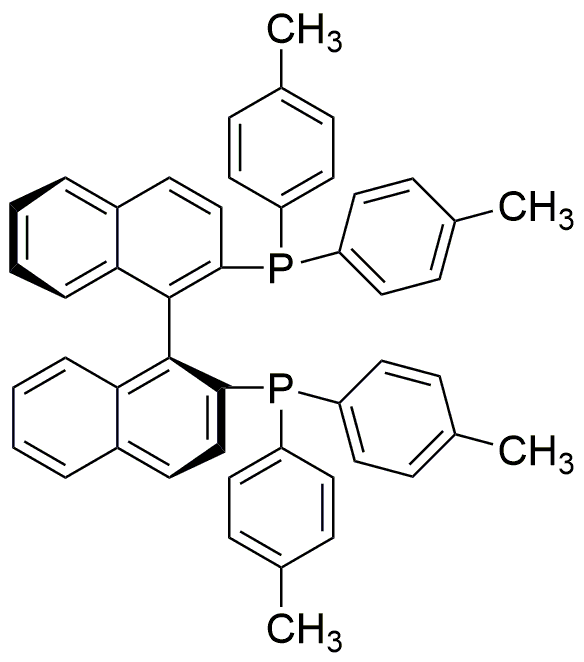(S)-(-)-TolBINAP is widely utilized in research focused on:
- Asymmetric Synthesis: This compound serves as a chiral ligand in asymmetric catalysis, enabling the production of enantiomerically pure compounds, which is crucial in pharmaceuticals.
- Pharmaceutical Development: Its application in drug synthesis helps create specific drug forms that can enhance efficacy and reduce side effects, particularly in the development of chiral drugs.
- Organic Chemistry Research: Researchers use it to explore new synthetic pathways and reactions, making it a valuable tool in academic and industrial laboratories.
- Material Science: It plays a role in the development of advanced materials, such as polymers and nanomaterials, due to its unique chemical properties.
- Environmental Chemistry: The compound is also investigated for its potential in catalyzing reactions that can lead to greener chemical processes, reducing waste and energy consumption.
General Information
Properties
Safety and Regulations
Applications
(S)-(-)-TolBINAP is widely utilized in research focused on:
- Asymmetric Synthesis: This compound serves as a chiral ligand in asymmetric catalysis, enabling the production of enantiomerically pure compounds, which is crucial in pharmaceuticals.
- Pharmaceutical Development: Its application in drug synthesis helps create specific drug forms that can enhance efficacy and reduce side effects, particularly in the development of chiral drugs.
- Organic Chemistry Research: Researchers use it to explore new synthetic pathways and reactions, making it a valuable tool in academic and industrial laboratories.
- Material Science: It plays a role in the development of advanced materials, such as polymers and nanomaterials, due to its unique chemical properties.
- Environmental Chemistry: The compound is also investigated for its potential in catalyzing reactions that can lead to greener chemical processes, reducing waste and energy consumption.
Documents
Safety Data Sheets (SDS)
The SDS provides comprehensive safety information on handling, storage, and disposal of the product.
Product Specification (PS)
The PS provides a comprehensive breakdown of the product’s properties, including chemical composition, physical state, purity, and storage requirements. It also details acceptable quality ranges and the product's intended applications.
Certificates of Analysis (COA)
Search for Certificates of Analysis (COA) by entering the products Lot Number. Lot and Batch Numbers can be found on a product’s label following the words ‘Lot’ or ‘Batch’.
Numéro de catalogue
Numéro de lot/série
Certificates Of Origin (COO)
This COO confirms the country where the product was manufactured, and also details the materials and components used in it and whether it is derived from natural, synthetic, or other specific sources. This certificate may be required for customs, trade, and regulatory compliance.
Numéro de catalogue
Numéro de lot/série
Safety Data Sheets (SDS)
The SDS provides comprehensive safety information on handling, storage, and disposal of the product.
DownloadProduct Specification (PS)
The PS provides a comprehensive breakdown of the product’s properties, including chemical composition, physical state, purity, and storage requirements. It also details acceptable quality ranges and the product's intended applications.
DownloadCertificates of Analysis (COA)
Search for Certificates of Analysis (COA) by entering the products Lot Number. Lot and Batch Numbers can be found on a product’s label following the words ‘Lot’ or ‘Batch’.
Numéro de catalogue
Numéro de lot/série
Certificates Of Origin (COO)
This COO confirms the country where the product was manufactured, and also details the materials and components used in it and whether it is derived from natural, synthetic, or other specific sources. This certificate may be required for customs, trade, and regulatory compliance.


